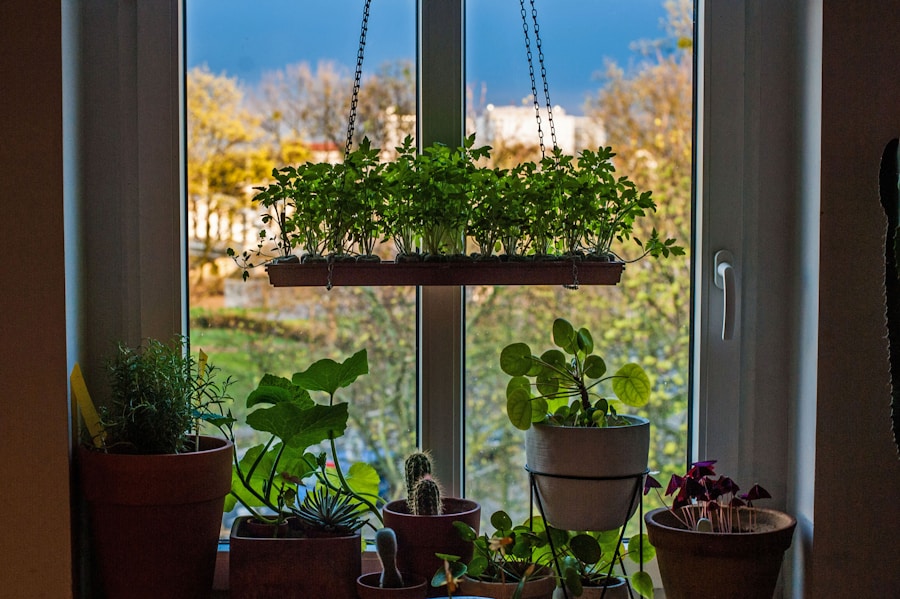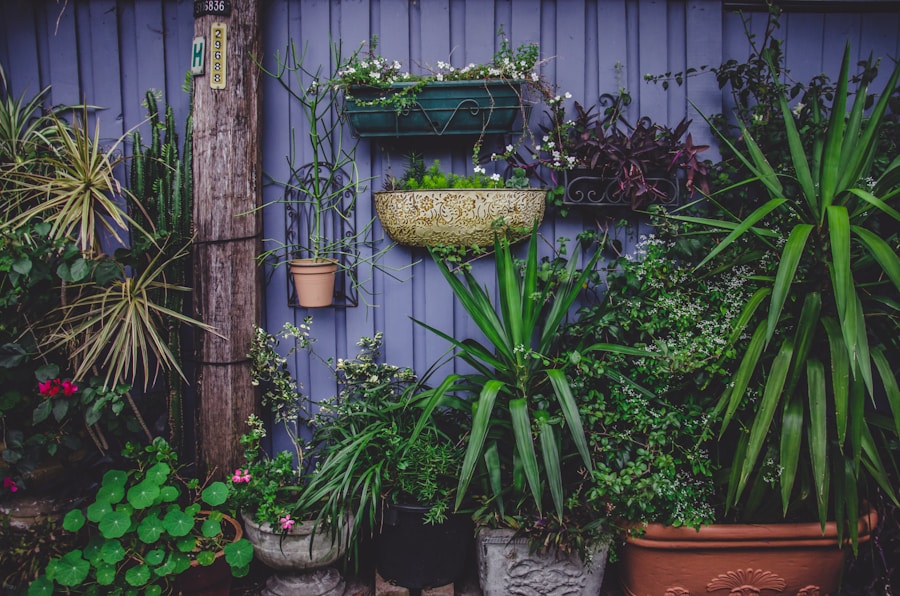When it comes to choosing the right tomato varieties for your garden, there are a few key factors to consider. First, think about the climate in your area. If you live in a cooler climate, you may want to choose varieties that are more cold-tolerant, such as Early Girl or Stupice. On the other hand, if you live in a warmer climate, you may want to choose heat-tolerant varieties like Sun Gold or Celebrity.
Another important factor to consider is the size and shape of the tomatoes you want to grow. If you’re planning on using your tomatoes for slicing and salads, you may want to choose larger, beefsteak varieties like Brandywine or Mortgage Lifter. If you’re more interested in cherry tomatoes for snacking and salads, you may want to choose smaller varieties like Sweet 100 or Sungold.
Finally, consider the disease resistance of the varieties you’re considering. Some varieties are more resistant to common tomato diseases like blight and wilt, which can save you a lot of time and effort in the long run. Look for varieties labeled as “disease-resistant” or “disease-tolerant” to ensure a healthier crop.
When it comes to choosing the right tomato varieties for your garden, it’s important to consider your climate, the size and shape of the tomatoes you want to grow, and the disease resistance of the varieties you’re considering. By taking these factors into account, you can ensure a successful and bountiful tomato harvest.
Soil Preparation and Planting
Before planting your tomato plants, it’s important to prepare the soil properly to give them the best possible start. Start by choosing a sunny spot in your garden with well-draining soil. Tomatoes thrive in full sun, so be sure to choose a location that receives at least 6-8 hours of sunlight per day.
Next, prepare the soil by adding organic matter such as compost or aged manure to improve its texture and fertility. This will help provide essential nutrients to your tomato plants and improve water retention in the soil. You can also add a balanced fertilizer with a higher phosphorus content to promote strong root development and fruit production.
When it comes time to plant your tomato seedlings, be sure to dig a hole deep enough to bury the stem up to the first set of leaves. This will encourage the plant to develop a strong root system and provide better support as it grows. Space your plants at least 18-24 inches apart to allow for proper air circulation and prevent overcrowding.
In summary, preparing the soil properly and planting your tomato seedlings in a sunny, well-draining location with plenty of organic matter will give them the best possible start. By taking these steps, you can ensure healthy and productive tomato plants in your garden.
Watering and Fertilizing Techniques
Proper watering and fertilizing techniques are essential for growing healthy and productive tomato plants. When it comes to watering, it’s important to keep the soil consistently moist but not waterlogged. Tomatoes need about 1-2 inches of water per week, either from rainfall or irrigation. Water deeply and infrequently to encourage deep root growth and prevent diseases like blossom end rot.
In addition to proper watering, fertilizing your tomato plants is crucial for their growth and fruit production. Start by applying a balanced fertilizer with a higher phosphorus content at planting time to promote strong root development. As the plants grow, side-dress them with a nitrogen-rich fertilizer every 3-4 weeks to encourage healthy foliage and fruit production.
Another important aspect of fertilizing tomatoes is providing them with essential micronutrients like calcium and magnesium. These nutrients are crucial for preventing common tomato disorders like blossom end rot and can be added to the soil through products like Epsom salts or crushed eggshells.
In conclusion, proper watering and fertilizing techniques are essential for growing healthy and productive tomato plants. By keeping the soil consistently moist but not waterlogged and providing essential nutrients through balanced fertilizers and micronutrient supplements, you can ensure a bountiful harvest of delicious tomatoes.
Pruning and Supporting Tomato Plants
Pruning and supporting your tomato plants are important tasks that can help improve their overall health and productivity. When it comes to pruning, start by removing any suckers that develop in the crotch between the main stem and branches. This will help promote better air circulation and reduce the risk of diseases like blight.
In addition to removing suckers, it’s also important to prune any yellowing or diseased leaves from your tomato plants. This will help prevent the spread of diseases and encourage healthier growth.
When it comes to supporting your tomato plants, there are several options to consider. One popular method is using tomato cages or stakes to provide support as the plants grow. This will help prevent them from sprawling on the ground and make it easier to harvest ripe fruit.
Another option is using trellises or string supports to train your tomato plants to grow vertically. This can help save space in the garden and make it easier to manage and harvest your plants.
In summary, pruning and supporting your tomato plants are important tasks that can help improve their overall health and productivity. By removing suckers and diseased leaves, as well as providing support with cages, stakes, or trellises, you can ensure healthy and productive tomato plants in your garden.
Pest and Disease Management
Pest and disease management is an important aspect of growing healthy tomato plants. When it comes to pests, common culprits include aphids, hornworms, and whiteflies. To manage these pests, start by inspecting your plants regularly for signs of infestation and hand-picking any pests you find. You can also use insecticidal soaps or neem oil as natural remedies to control pest populations.
In addition to pests, tomato plants are also susceptible to diseases like blight, wilt, and blossom end rot. To prevent these diseases, start by choosing disease-resistant varieties when planting your tomatoes. It’s also important to practice good sanitation by removing any diseased plant material from the garden and rotating your crops each year.
Another important aspect of disease management is providing proper air circulation around your tomato plants. This can help prevent diseases like blight by reducing humidity levels and promoting faster drying of foliage.
In conclusion, pest and disease management is an important aspect of growing healthy tomato plants. By inspecting your plants regularly for signs of infestation, choosing disease-resistant varieties, practicing good sanitation, and providing proper air circulation, you can ensure a bountiful harvest of delicious tomatoes.
Harvesting and Storing Tomatoes
Harvesting and storing tomatoes properly is crucial for preserving their flavor and quality. When it comes time to harvest your tomatoes, wait until they are fully ripe on the vine for the best flavor. Look for fruits that are fully colored and slightly soft to the touch before picking them.
Once harvested, store your tomatoes at room temperature away from direct sunlight to allow them to ripen fully. Avoid storing them in the refrigerator, as this can cause them to lose their flavor and texture.
If you have an abundance of ripe tomatoes, consider preserving them by canning or freezing for later use. Canning tomatoes is a great way to enjoy their flavor year-round in sauces, salsas, and soups. Freezing tomatoes is another option that allows you to enjoy their flavor in dishes like chili or pasta sauce.
In summary, harvesting and storing tomatoes properly is crucial for preserving their flavor and quality. By waiting until they are fully ripe on the vine before picking them and storing them at room temperature away from direct sunlight, you can enjoy delicious tomatoes throughout the season.
Creative Ways to Enjoy Your Homegrown Tomatoes
Once you’ve harvested your homegrown tomatoes, there are countless creative ways to enjoy them in your kitchen. One popular option is making fresh salsa with diced tomatoes, onions, jalapenos, cilantro, and lime juice. This flavorful condiment is perfect for dipping tortilla chips or topping grilled meats.
Another delicious way to enjoy homegrown tomatoes is by making homemade marinara sauce for pasta dishes. Simply saute diced onions and garlic in olive oil, then add diced tomatoes, basil, oregano, and a pinch of sugar for sweetness. Simmer the sauce until it thickens and serve over your favorite pasta for a satisfying meal.
If you have an abundance of ripe tomatoes, consider making homemade tomato soup for a comforting meal on a cool day. Simply puree diced tomatoes with onions, garlic, broth, and cream for a creamy and flavorful soup that’s perfect for lunch or dinner.
In addition to savory dishes, homegrown tomatoes are also perfect for making sweet treats like tomato jam or preserves. These versatile condiments are great for spreading on toast or serving alongside cheese for a delicious appetizer.
In conclusion, there are countless creative ways to enjoy your homegrown tomatoes in the kitchen. Whether you’re making fresh salsa, homemade marinara sauce, comforting tomato soup, or sweet treats like tomato jam or preserves, there’s no shortage of delicious ways to enjoy the fruits of your labor in the garden.
In conclusion, growing tomatoes in your garden can be a rewarding experience when done properly. By choosing the right varieties for your climate and preferences, preparing the soil properly, watering and fertilizing effectively, pruning and supporting your plants, managing pests and diseases, harvesting and storing your tomatoes correctly, and finding creative ways to enjoy them in the kitchen, you can ensure a bountiful harvest of delicious homegrown tomatoes year after year. With a little time and effort, you can enjoy the satisfaction of growing your own fresh produce right in your backyard.


